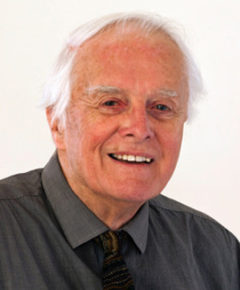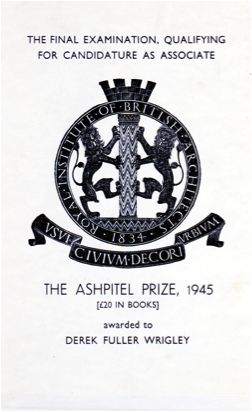“PLANNING FOR QUIETNESS”
AN ARCHITECTURAL STUDY INTO THE REDUCTION OF NOISE IN SOCIETY
To qualify as an architect in the UK I firstly had to pass my final examinations for the Manchester School of Art (1944) and then sit again in London at the RIBA in Portland Place with the 1945 Final Examinations involving a 4 day design exam. Which that year was “An experimental agricultural research station”. I also had to submit my Finals Thesis on a topic of my own choosing “Planning for quietness” which was a study of noise in society and the various ways in which we, as architects, might positively design quietness into buildings and negatively design noise out of our structures and equipment.
The range of my enquiry started at the planning level – siting noise sources such as airports away from residential areas, then to the buildings themselves with the problems of structure –borne and air-borne noise and finally to the micro-level of water noise in the filling of WC cisterns. My examiner was Mr Hope Bagenal, the most distinguished acoustics expert (although sound insulation and acoustics are really different areas of scientific study).in the UK at the time who conducted my Oral Exam. on the thesis material – to test my real knowledge of the subject.
I was in London for a full week – a wonderful experience for a north country lad.
Both the design exam and my thesis received separate Distinctions and it would seem that my total marks put me in the premier position of top of all candidates in the 1945 Final Examination (about 200 of us, from memory) which earned me the award of the ASHPITEL PRIZE
(see Awards segment for details of how this came about).


